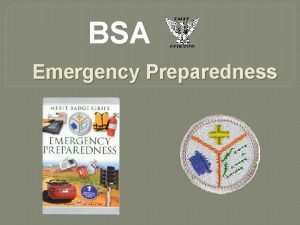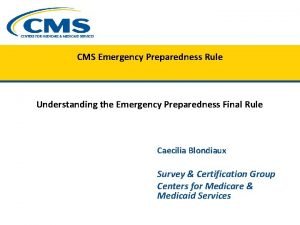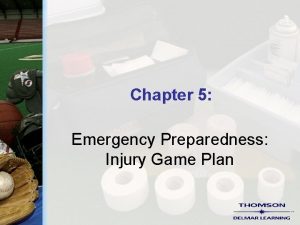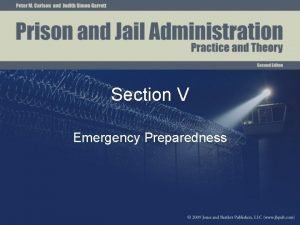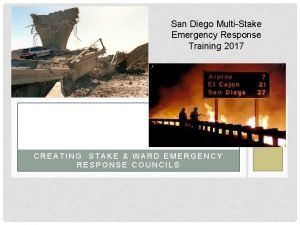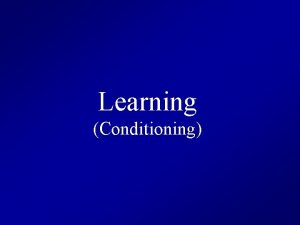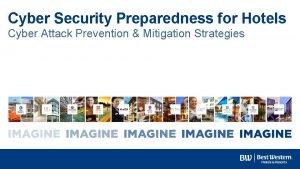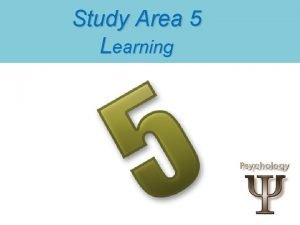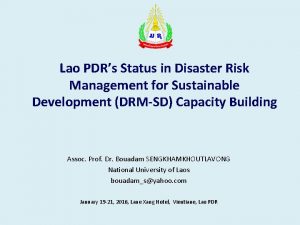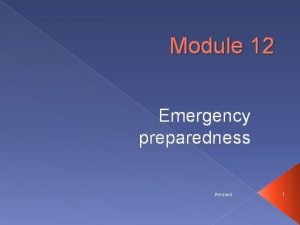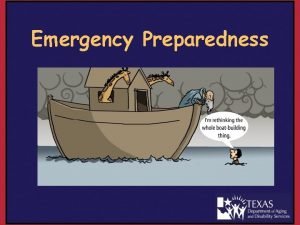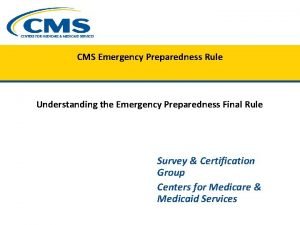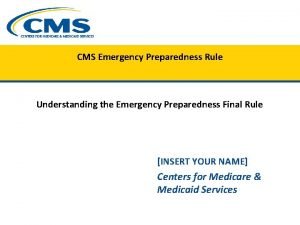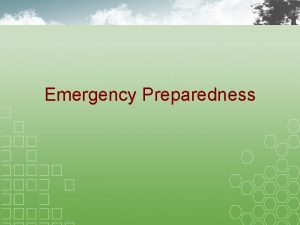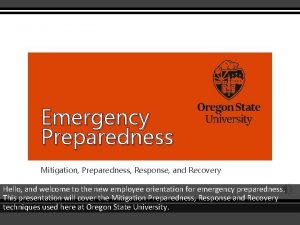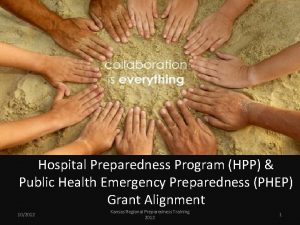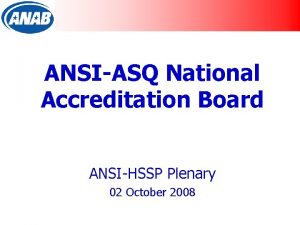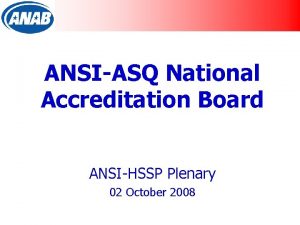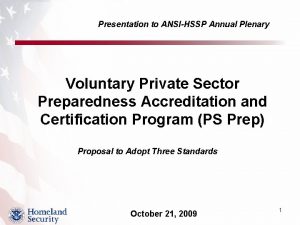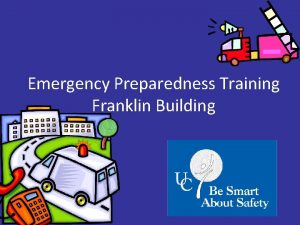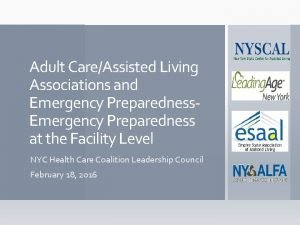ANSIHSSP Workshop on Emergency Preparedness for Persons with


















- Slides: 18

ANSI-HSSP Workshop on Emergency Preparedness for Persons with Disabilities and Special Needs February 3 -4, 2009 Kellogg Conference Hotel at Gallaudet University 1

Purpose: Explore the need for standardsbased solutions for more effective emergency preparedness for the community of persons with disabilities and special needs. 2

Co-Chairs: Hilary Styron, NOD/EPI Allan Fraser, NFPA 3

Participation: 4

NFPA’s DARAC Background: Discussed the need for product standards for components used by people with disabilities Discussed the need for 3 rd party certification programs 5

NFPA’s DARAC Background: The entire area of products and devices used to aid persons with disabilities is wide ranging. Federal criteria and some private sector criteria may set up some de-facto level of performance but there is no guarantee that a product or device will perform as intended. 6

Product Standards: $795 $79. 99 $65 $389 7

Product listing/evaluation program for: Usability beyond the applicable accessible standards Maintainability (cleaning, adjusting, lubricating, availability of parts) Durability Product weight Weight capacity or limitation Stability General Safety and comfort – pinch points, sharp edges, protrusions Reliability of safety devices or features Ease of use of controls or safety devices Combustibility/flamma bility 8

3 rd party evaluation programs: Platform lifts Stair descent devices 9

3 rd party evaluation programs: 309. 4 Operable parts shall be operable with one hand shall not require tight grasping, pinching, or twisting of the wrist. The force required to activate operable parts shall be 5. 0 pounds (22. 2 N) maximum. Operable parts Lavatories 10

3 rd party evaluation programs: Boarding chairs for Airplanes Power back- up for equipment 11

Findings & Recommendations: I. Built environment 1. Information 2. Stairways 3. Elevators 4. Stair Descent II. Evacuation Operations 1. Stair evacuation devices 2. Communication for 911 call centers Devices 3. Training 12

ANSI-HSSP Next Steps: 1. Task group to identify a course to approach U. S. Standards Developing Organizations (SDOs) to identify and prioritize specific needs, including: public education; enhanced federal policy; transportation needs; as well as various other issues outlined in the final Workshop report. 13

ANSI-HSSP Next Steps: Work to develop input to code developing organizations, state, local, and government agencies for use in their policy development procedures. 3. While several key stakeholders were represented at this Workshop, it is clear that there are others that were not in attendance that could contribute to the recommendations outlined above. 4. It is imperative that outreach strategies be identified to advance standardization efforts addressing the needs of the community of people with disabilities. 2. 14

“A journey of a thousand miles begins with a single step. ” 15

RESNA to Develop Standard for Stair Descent Devices ANSI Project Initiation Notification System (PINS) 7 -3109 BSR/RESNA AT-1200 x, Assistive Technology - Volume 1: Emergency Stair Travel Devices for Individuals with Disabilities (new 16 standard)

RESNA to Develop Standard for Stair Descent Devices To provide standards and testing for devices used by individuals with disabilities to evacuate buildings along staircases during an emergency. The standards and testing for these devices will focus on their strength, durability, support for individuals with disability, or requirements of the assistants. Covers devices used for travel along stairs during emergency evacuations. This standard does not cover stair-climbing devices, incline platform lifts, or stairway chairlifts. It specifies vocabulary, methods of measurement, test methods and requirements for: dimensions and weight; seating and positioning; performance measures; strength and durability testing; operating limitations; and disclosure requirements. 17

Glenn Hedman Director, Assistive Technology Unit University of Illinois at Chicago, College of Applied Health Sciences 1640 W. Roosevelt Road Suite 436 IIDD MC 626 Chicago, IL 60608 18
 One person's garbage is another person's treasure
One person's garbage is another person's treasure Bsa emergency preparedness
Bsa emergency preparedness Cms emergency preparedness rule
Cms emergency preparedness rule National radiological emergency preparedness conference
National radiological emergency preparedness conference Chapter 5 emergency preparedness injury game plan
Chapter 5 emergency preparedness injury game plan Chapter 36 emergency preparedness and protective practices
Chapter 36 emergency preparedness and protective practices Chapter 36 emergency preparedness and protective practices
Chapter 36 emergency preparedness and protective practices Stake emergency preparedness plan
Stake emergency preparedness plan 4 quadrants of operant conditioning
4 quadrants of operant conditioning What is a disaster
What is a disaster Promoting family earthquake preparedness
Promoting family earthquake preparedness Biological preparedness
Biological preparedness Global pandemic preparedness
Global pandemic preparedness Conditioning learning
Conditioning learning Implementing nfpa 1600 national preparedness standard
Implementing nfpa 1600 national preparedness standard Data breach preparedness
Data breach preparedness What is learning
What is learning Nfpa 1600 standard
Nfpa 1600 standard Conclusion of disaster management ppt
Conclusion of disaster management ppt

